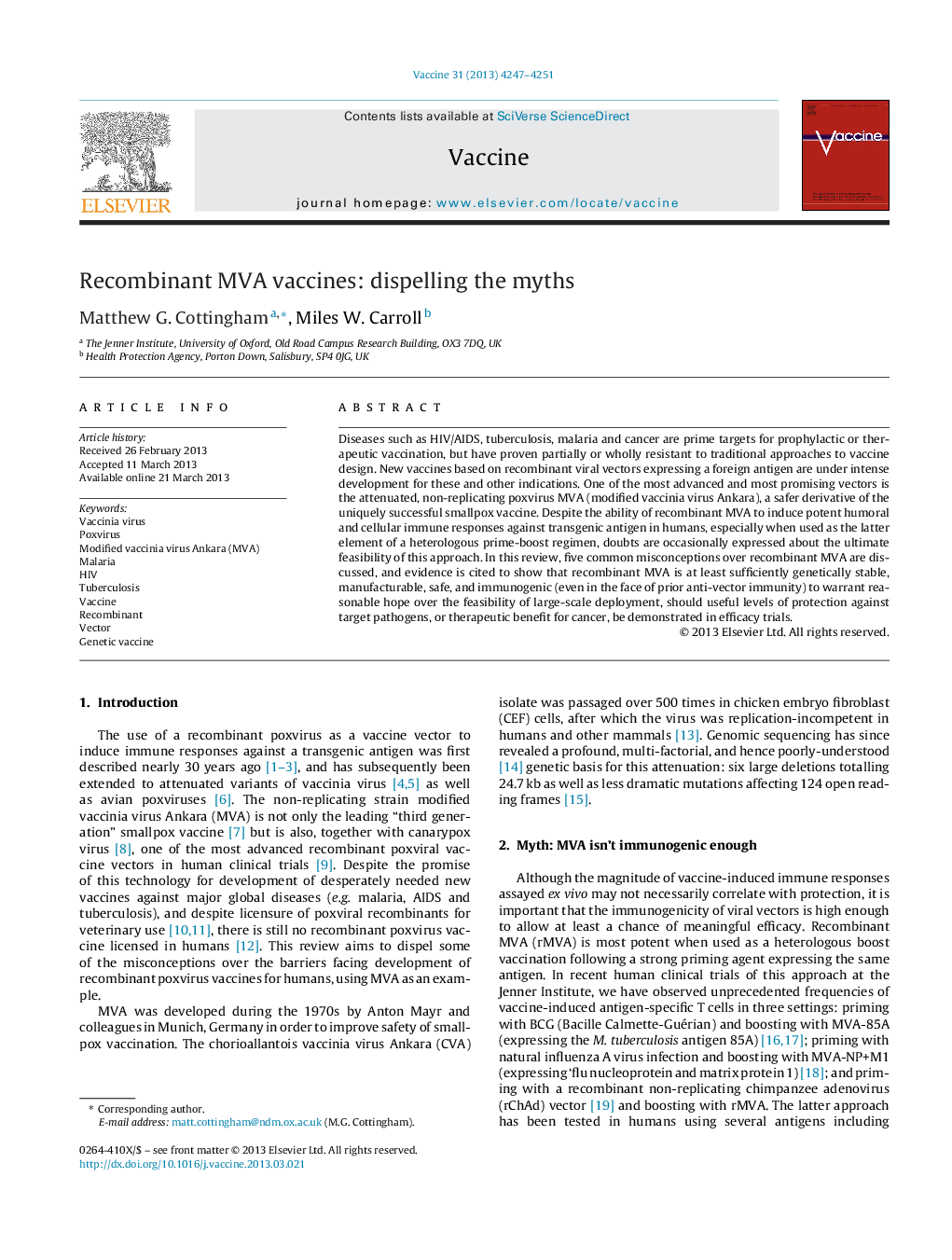| کد مقاله | کد نشریه | سال انتشار | مقاله انگلیسی | نسخه تمام متن |
|---|---|---|---|---|
| 2402316 | 1102770 | 2013 | 5 صفحه PDF | دانلود رایگان |

• Recombinant MVA is most immunogenic as a heterologous boost after strong priming.
• Most transgenes do not result in genetic instability of recombinant MVA.
• Large-scale manufacturing of non-recombinant MVA is a reality.
• Anti-vector immunity does not impede boosting of responses to MVA transgene product.
• There is no convincing evidence of MVA replication in human cells.
Diseases such as HIV/AIDS, tuberculosis, malaria and cancer are prime targets for prophylactic or therapeutic vaccination, but have proven partially or wholly resistant to traditional approaches to vaccine design. New vaccines based on recombinant viral vectors expressing a foreign antigen are under intense development for these and other indications. One of the most advanced and most promising vectors is the attenuated, non-replicating poxvirus MVA (modified vaccinia virus Ankara), a safer derivative of the uniquely successful smallpox vaccine. Despite the ability of recombinant MVA to induce potent humoral and cellular immune responses against transgenic antigen in humans, especially when used as the latter element of a heterologous prime-boost regimen, doubts are occasionally expressed about the ultimate feasibility of this approach. In this review, five common misconceptions over recombinant MVA are discussed, and evidence is cited to show that recombinant MVA is at least sufficiently genetically stable, manufacturable, safe, and immunogenic (even in the face of prior anti-vector immunity) to warrant reasonable hope over the feasibility of large-scale deployment, should useful levels of protection against target pathogens, or therapeutic benefit for cancer, be demonstrated in efficacy trials.
Journal: Vaccine - Volume 31, Issue 39, 6 September 2013, Pages 4247–4251